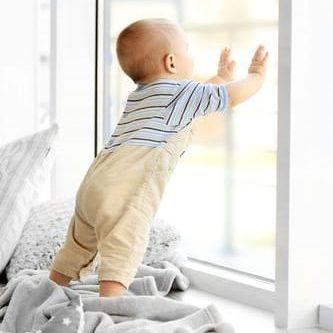Safety in your home should be your number one priority when it comes to glass. So how can you be sure that the glass installed in your home is safe?
Well, the short answer is you can’t.
You see not all glass is the same. And there are Australian Standards that dictate which safety glass type and thickness should be installed in any given application. It’s called the AS1288:2006 Glass in Buildings – Selection & Installation.
The AS1288 is like a Glazier’s handbook to glass installation and glass replacement. It is complex in nature and takes into consideration factors such as the risk of human impact. So areas in your house that are at greater risk of a person falling through it must be Grade A Safety Glass.

Most houses built now only use safety glass as standard. But chances are if your house was built before 2006 then many of the lower glass panels in your doors and windows are not Grade A Safety Glass.
There are two types of Grade A Safety Glass – Laminated Glass and Toughened Glass. They are both designed to withstand impact and are much stronger than ordinary annealed glass. One of greatest safety element is how safety glass breaks.
Laminated Glass is made from two sheets of glass bonded together with a thin vinyl interlayer, which prevents it from breaking into shards on impact. Instead it will make a spider web break but stay intact.
Toughened Glass on the other hand is treated in a heat furnace to make it four to five times tougher than ordinary glass of the same thickness. So when it breaks it shatters into many small blunt pieces.
All safety glass should be labelled appropriately including – Grade (A or B), Safety Type (Laminated or Toughened) and a statement that confirms it adheres to the relevant building standards (eg AS1288). But in practice this does not always happen.
So this means you can’t be sure if the glass in your home is or isn’t safety glass. The only true way to find out is to have an experienced glazier perform a safety audit. An audit will determine the safety type and thickness of glass in areas of your home that are at risk of human impact. This includes glass panels in doors and side-panels, windows and even shower-screens.
A safety audit of your home could save lives. If your house was built before 2006, there is a strong chance that the lower glass panels do not conform to the current minimum safety standard and your family could be at risk.
For more information about glass safety or to order your safety audit visit www.glassontime.com.

